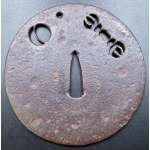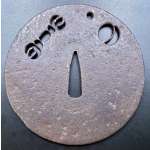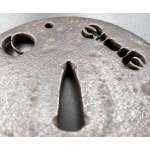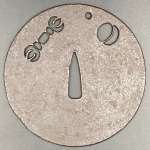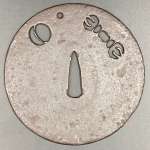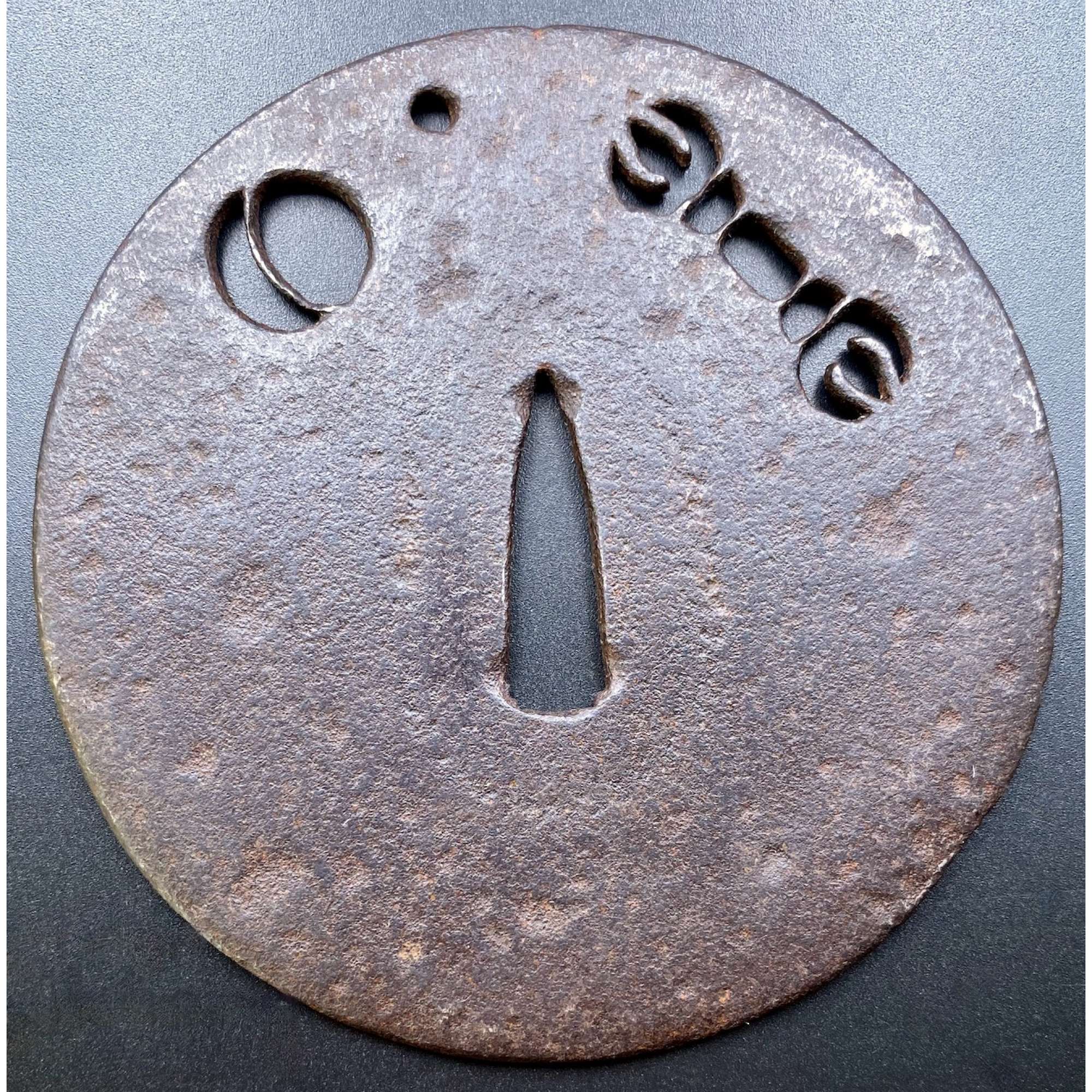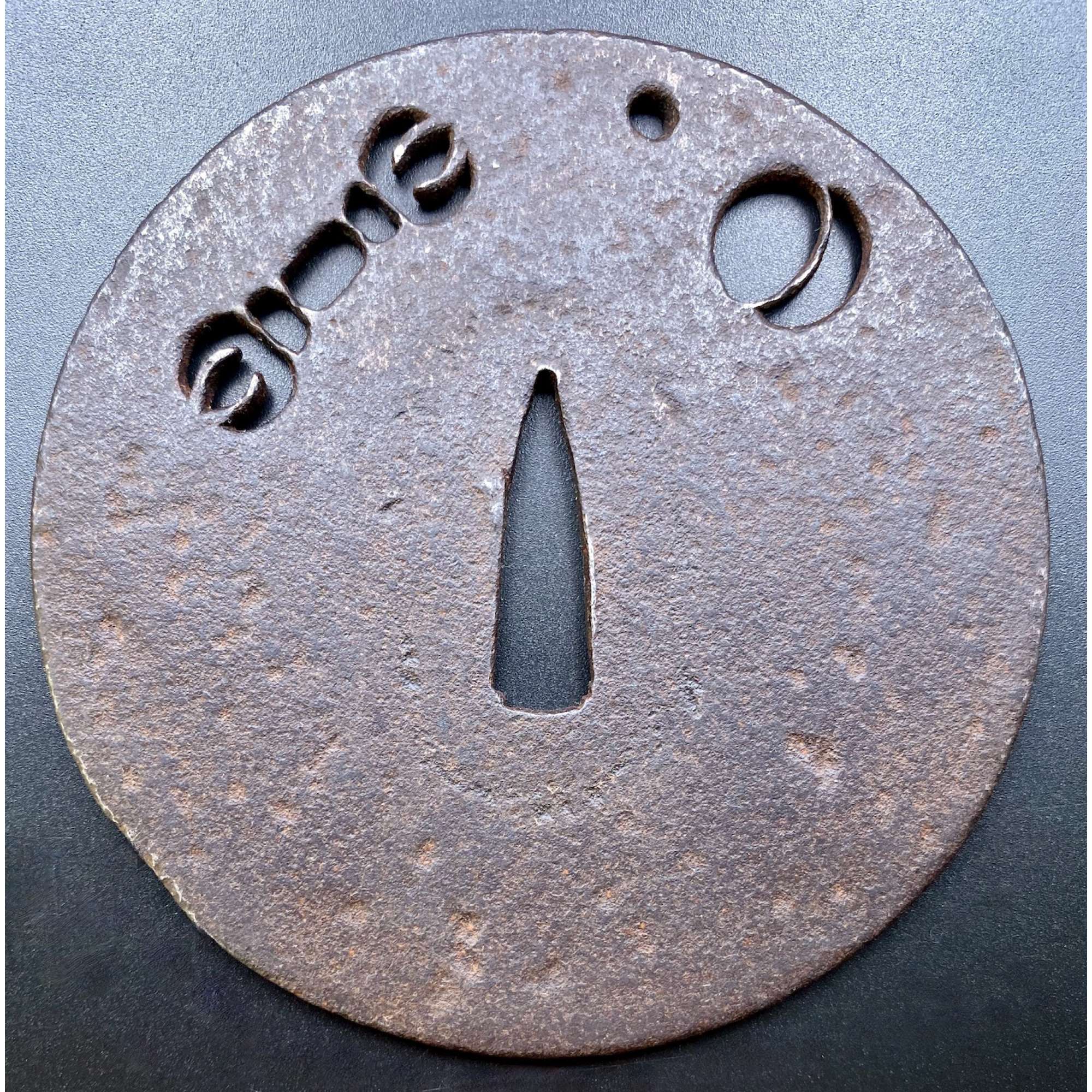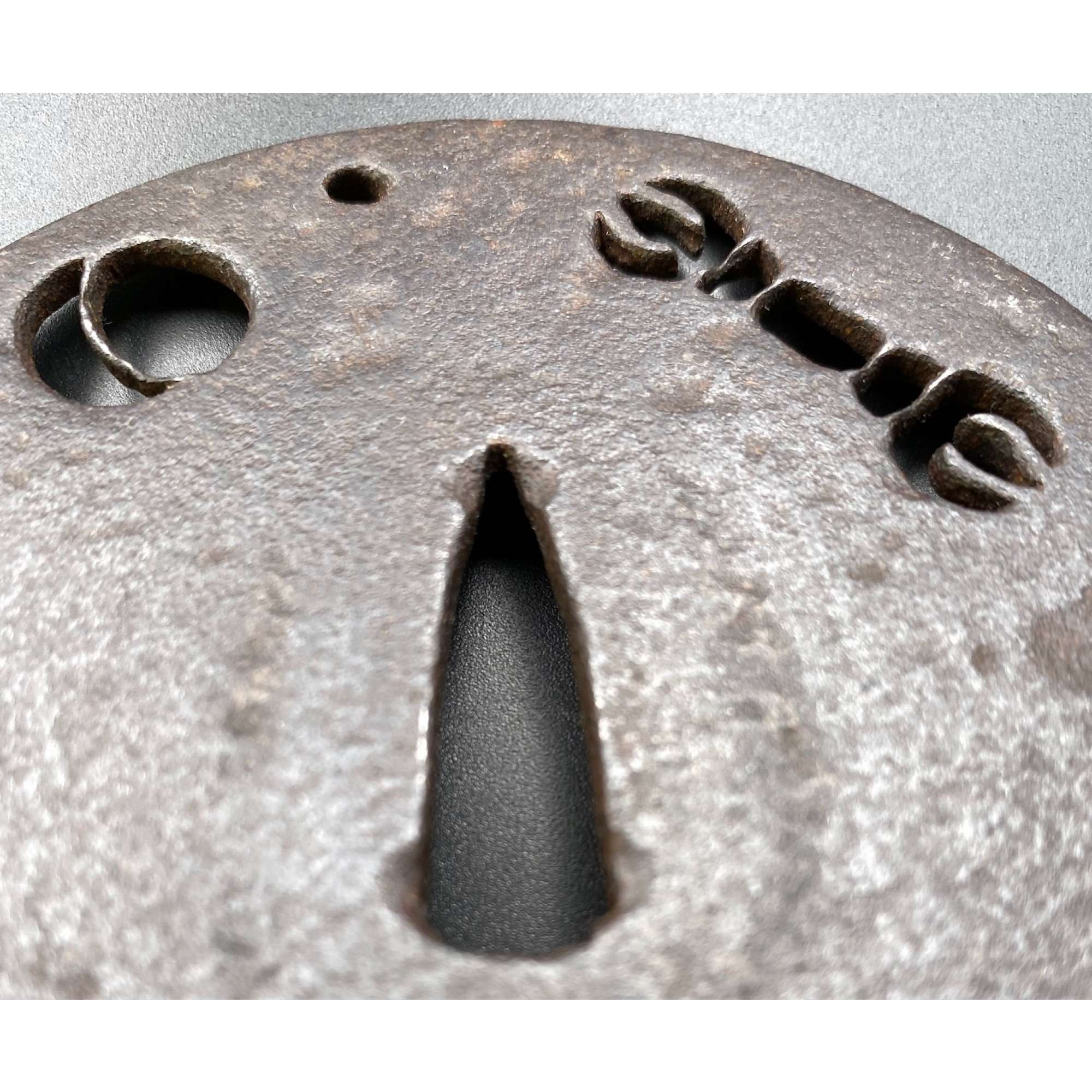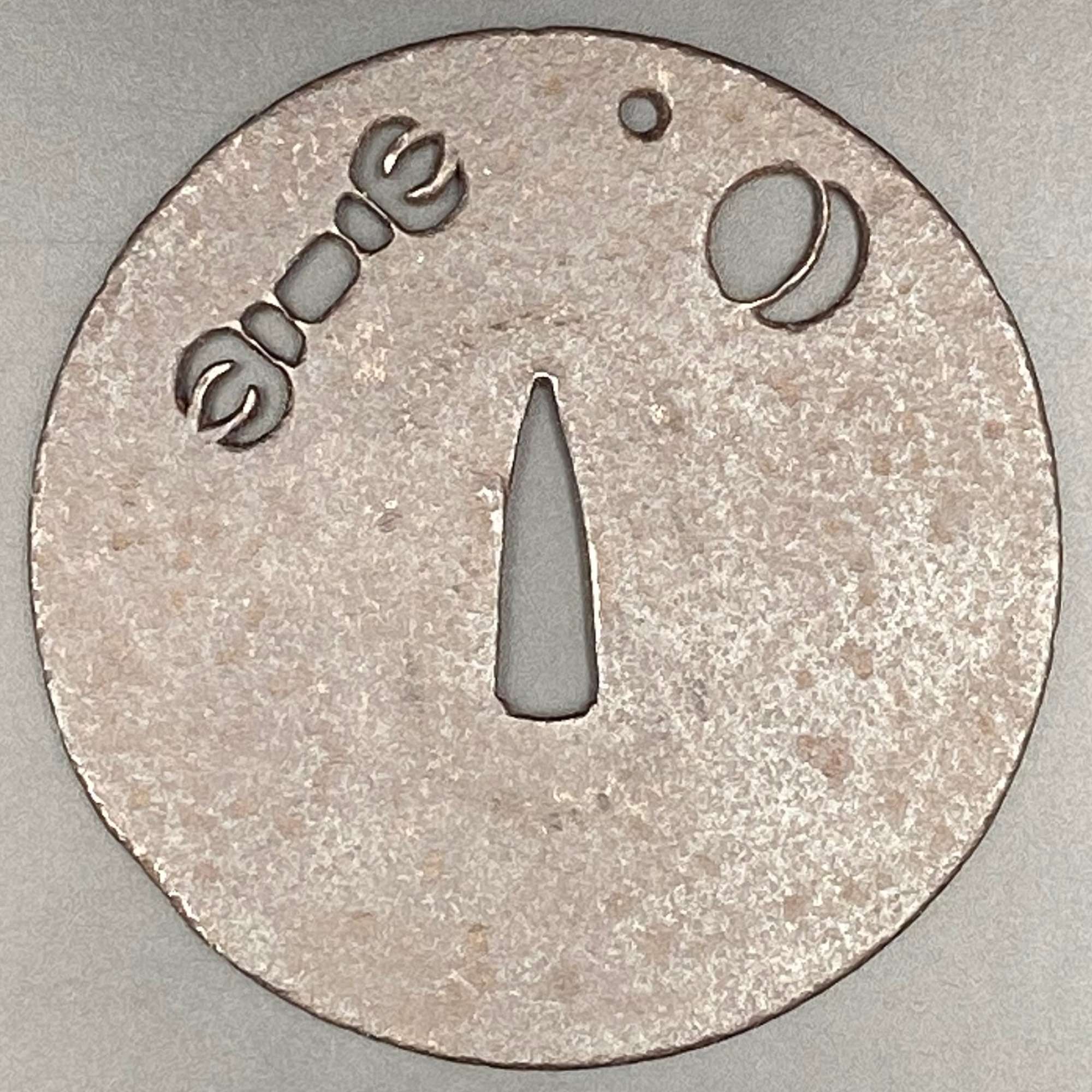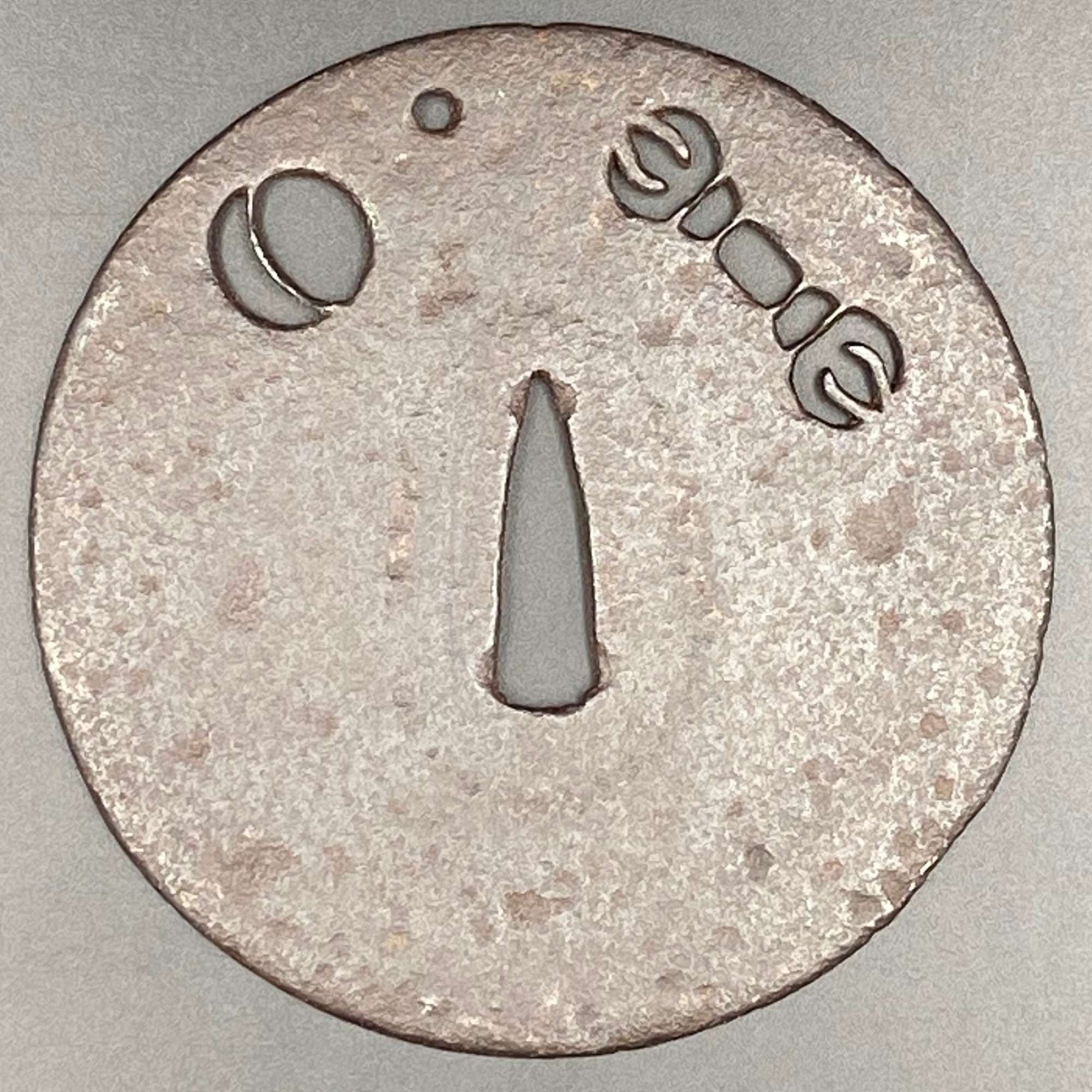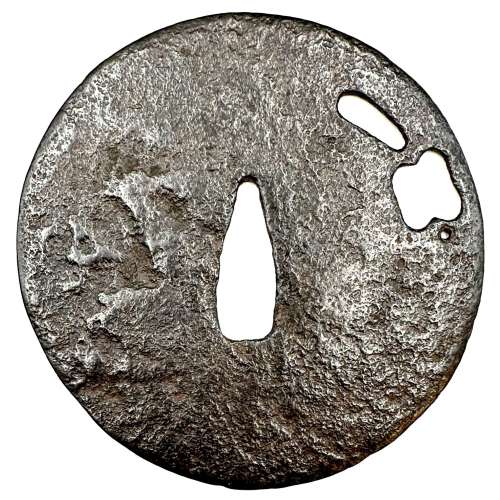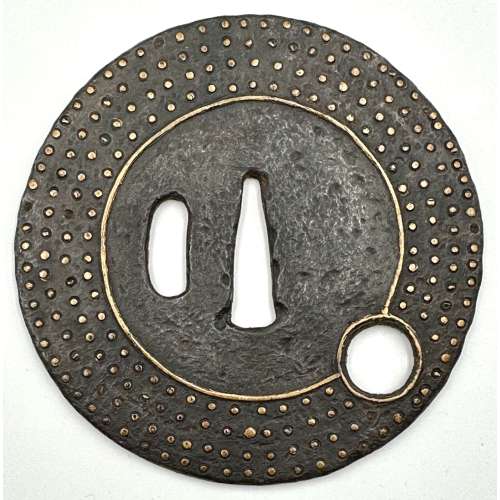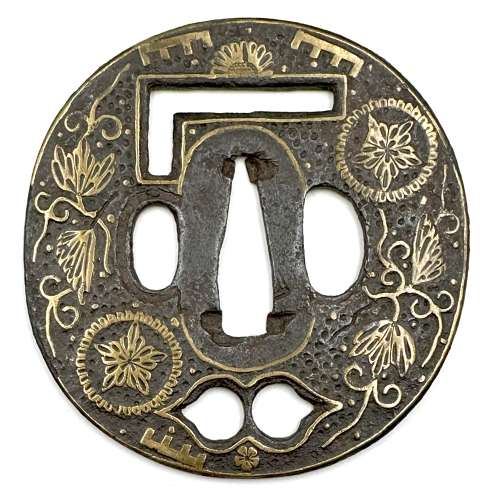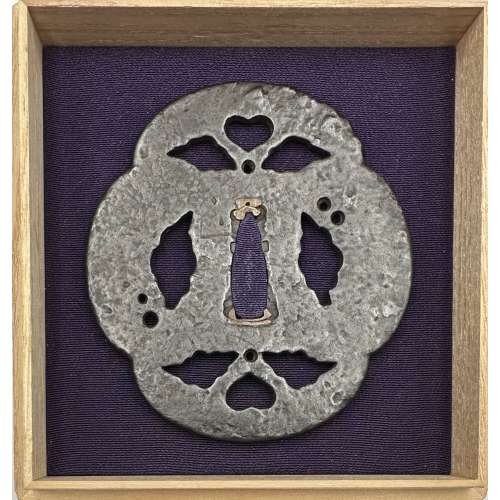A ko-tosho tsuba made of iron, of the round form (丸型, maru–gata), pierced in negative silhouette (文透, mon-sukashi) with the design of Shingon Buddhism symbols of vajra [金剛杵] (kongosho), Sun, Moon and Star [月日星] (tsuki-hi-hoshi) – three sources of light [三光] (sankō). Round rim. No hitsu-ana; the shape of nakago-ana may suggest use on naginata [薙刀.
Muromachi period (1393 – 1573).
Height: 94.4 mm, Width: 93.4 mm, Centre thickness: 3.1 mm.
Another possible explanation for “The element at the 11-o’clock position is in my opinion a kemari ball for the courtly game of the same name (picture attached)” [Markus Sesko].

Tsukioka Yoshitoshi [月岡 芳年] (Japan, 1839 – 1892): Tokugawa Yoshimune [徳川 吉宗] (1684 – 1751) playing kemari [蹴鞠]


